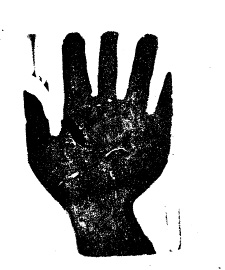Goals: University autonomy, the right of all university parties to elect university professors, modernisation of the curriculum, university education to be available and affordable for all, and secularisation of universities
SUCCESS IN ACHIEVING SPECIFIC GOALS: 6 points out of 6
SURVIVAL: 1 / 1
GROWTH: 3 / 3
Increased prosperity and the expansion of electoral rights at the turn of the century in Argentina precipitated significant growth of the middle class and broader enrolment in universities.
The universal suffrage law of 1912 (granted to men over 18) was first applied in 1916, when Hipolito Yrigoyen of the Radical Party was elected president with support from the middle and working classes.
Between 1916 and 1918, students and young graduates pushed for educational reforms at the National Universidad de Córdoba, considered to be one of the more conservative universities at the time. They were led by recent Córdoba graduate Deodoro Roca and intellectuals such as Arturo Orgaz, Saul Alejandro Taborda, and Arturo Capdevila, who founded journals to introduce new ideas, established discussion groups, and organised public lectures.
The group Atenuo Universitario, founded in 1914 and including students and professors from the University of Buenos Aires, established the bimonthly journal Ideas, which frequently championed education reforms.
Gabriel del Mazo and Hiram Pozzo were members of Atenuo. Del Mazo served in the Federación Universitaria de Buenos Aires (FUBA), and Pozzo was president of the Federación Universitaria de Córdoba (FUC).
“In September, labour groups in Córdoba organised with the students, calling a general strike”
In December 1917, the University of Córdoba refused to concede to student demands that they re-open a boarding house for medical students close by the school. When students affiliated with the FUC returned for the school year in March 1918 to demand a reply, they were again rebuffed.
In response, students called for a mass protest in the grounds of the university on 31 March. They contacted local politicians and labour groups. Their primary goals were to secularise and democratise Córdoba University by expanding student and professor participation in its administration and modernising the curricula.
They also wanted to make university education available and affordable by lifting entrance restrictions and having greater flexibility in attendance and examinations to accommodate low- and middle-income students with work obligations.
In response, the Consejo Superior, or Supreme Council of the university, closed its doors to students and planned to disregard any student requests.
The three Federaciones of Córdoba, Buenos Aires, and La Plata established a national Federación Universitaria de Argentina (FUA) to coordinate their efforts.
Participation is vital
After receiving student leaders from the FUA, president Yrigoyen declared the need for an intervention, and appointed a state official, Dr Nicholas Matienzo, to redesign the university structure, establishing a new University Assembly on 31 May. They elected new deans for the three colleges, all of whom appeared to have strong Radical Party affiliations, and a new chancellor, Dr Antonio Nores.
As a member of an elite association for Catholic men, Nores offended students, who rejected his nomination and flooded his installation on 15 June in protest and to disrupt the event, although Nores was still able to assume the chancellorship on 17 June.
On 21 June, the FUC called for Nores’s resignation and published the Manifesto Liminar, detailing their argument to modernise the outdated university structure. The piece, edited by Roca, insisted that increasing student participation in the assembly was vital.
The first National Student Congress, organised by the FUA, held its first session one month later, on 21 July, advocating autonomy and contesting the regime’s attempt to control the reform process.
Conceding to pressure, Nores resigned.
Support from workers
In early September, several labour groups in Córdoba prominently organised with students, calling a general strike. The FUC criticised the capitalist economic system to show their support for the labour unions that were aiding the student movement, and sent two representatives to assist the striking workers.
Two leaders of the Federación were arrested by police for inciting workers to armed revolt, prompting labour groups across the country to rise up in protest.
On 5 September, local Córdoba labour leaders announced that they had willingly accepted backing by the Federación.
In October 1918, president Yrigoyen conceded to the students’ demands, approving the introduction of a student reform programme at Córdoba in which students could be elected representatives in the university’s administrative councils and influence school policy. In addition, the programme made class attendance optional, eased restrictions on educational materials, and permitted greater flexibility in examination procedures.
The same reforms were extended to the universities of Buenos Aires and La Plata, in addition to the universities of Santa Fe and Tucamen (established in 1919 and 1921, respectively). The university reform movement in Argentina influenced university reform campaigns in Uruguay, Chile and Peru, among others.


